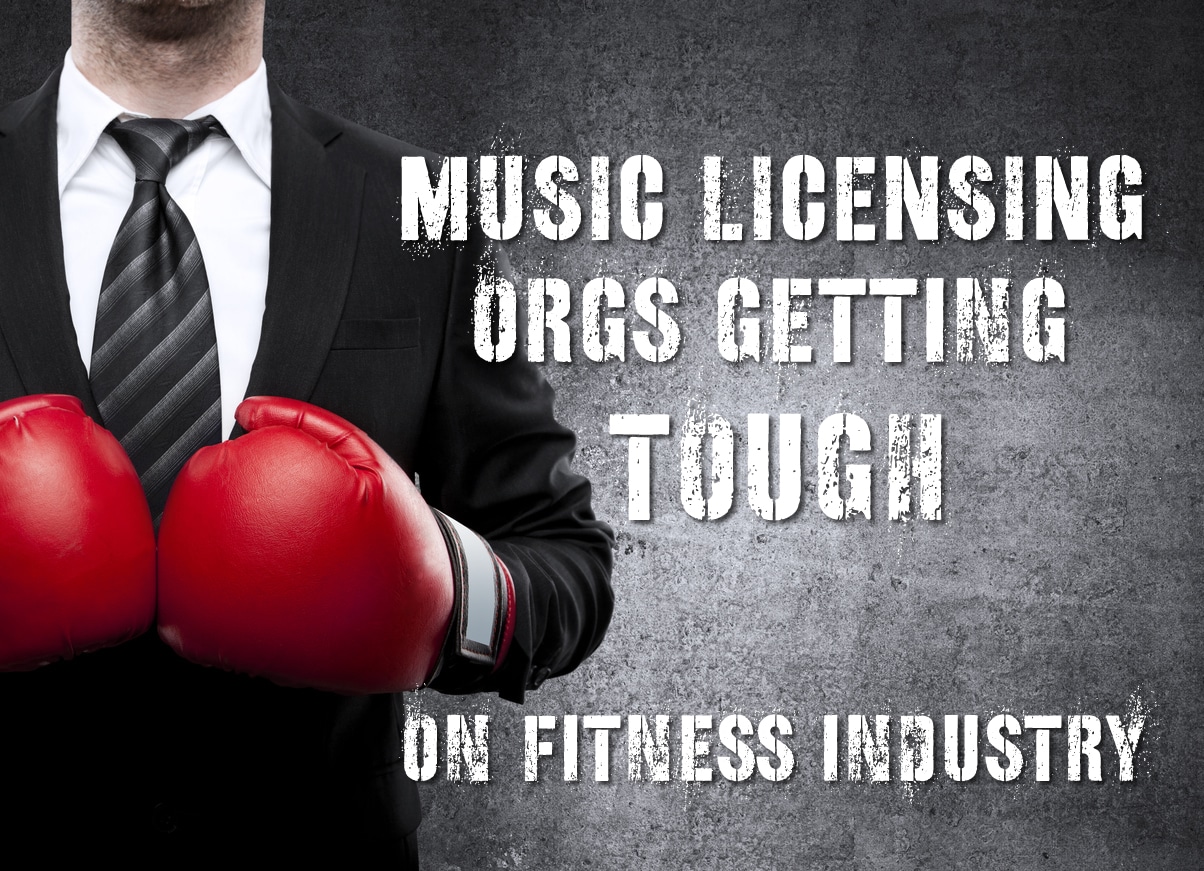Performance Rights Groups Muscle In On Fitness Industry With Special Music Licensing Enforcement

What is a standard license?
A music licensing service can deliver great-sounding music to your fitness gym. However, some specific rules must be followed to remain in compliance with copyright law.
A background music service may be used in conjunction with physical activity – specifically in cases where the physical movement is dependent upon the music. This is because the music licensing organizations, namely Global Music Rights, ASCAP, BMI, and SESAC, specify that such a use is not a standard license.
Special Music Licensing For Fitness Clubs
No matter which background music service you use, your agreement will contain these three restrictions:
- Performance fees do not allow the use of The Service whereby the music is used in conjunction with physical activity that involves physical movement dependent upon the music, including (but not limited to) dancing, skating, instructed physical activity such as fitness classes, or similar forms of activity.
- Performance fees do not allow the use of The Service in places where an admission fee is charged, including (but not limited to) sporting events, theme parks, and nightclubs with a “cover” charge.
- Performance fees do not allow using The Service in hotel rooms or similar facilities for personal accommodation.
The type of license needed for any fitness class that “moves to the groove” is not a standard license and is not part of the overhead music agreement.
What about general-use overhead background music licensing?
BMI (Broadcast Music Incorporated) says it this way:
“Commercial music services, which are licensed with BMI, provide BMI music for background use only – in your locker or dressing rooms, open gym, lounge, or lobby area. Once you use music to accompany aerobics or other instructional classes, your performance of music falls outside the scope of coverage afforded by your commercial music service agreement and you must obtain a BMI license to cover your music performances.”
ASCAP, BMI, SESAC, and GMR are the four performance rights organizations being paid by your business music service on your behalf for tunes heard in the common areas.
But wait: one of these is not like the others!
SESAC argues that they have a broad “membership” clause, meaning any type of fee (club fee, membership, service fees, admission) also cannot be covered by a business music service. This position is unique because ASCAP recently stated that they do not want to use such fees to determine license type. In the statement above, BMI specifically states that they don’t mind music in the lobby, gym, and locker rooms being covered by your standard background music license from your provider (such as Easy On Hold).
For some reason, SESAC, by far the most expensive of any music licensing organization, has an extremely broad definition of an admission fee. In my discussions with SESAC, I discovered that they rarely go after “membership dinner clubs.” They seem to have better luck with Cheerleader Training, Boxing Clubs (see one club’s list of fees, including music licensing), Climbing, and Yoga facilities. See additional article for Cheerleading Gyms. Each link will reveal further information on this topic.
Separate Music License for TV and classes?
In our experience, ASCAP, for example, is willing to reduce your overall fees if you are already paying for a background music service. They will only charge for the television and class instruction licenses. SESAC? Not so! SESAC will merely use a “blanket” agreement that would be the same cost to you even if you did not play “overhead” music. They want annual license fees to cover ALL music uses, including those used in television programs.

The best scenario for a physical fitness organization is to work out, item by item, where and how music and/or television is being used in the club and then get estimates on music licensing fees. Music adds a lot to the energetic atmosphere of a fitness facility. A business music service can be a great source of music while relieving you and your organization of being the “DJ” all day long.



